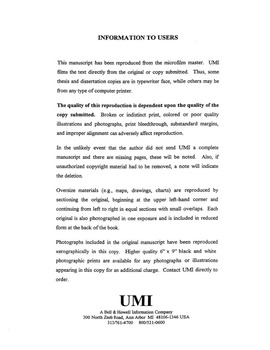| dc.contributor.advisor | Gates, Edward, | en_US |
| dc.contributor.author | Stringer, Amanda Leigh. | en_US |
| dc.date.accessioned | 2013-08-16T12:30:33Z | |
| dc.date.available | 2013-08-16T12:30:33Z | |
| dc.date.issued | 1999 | en_US |
| dc.identifier.uri | https://hdl.handle.net/11244/5823 | |
| dc.description.abstract | Because each of the sonatas has unique characteristics and represents a different stage of Tippett's compositional life, the analytic approach varies among the sonatas. While not rejecting traditional methods where they are useful, the focus is on the listener's aural experience, with the goal of revealing the strengths and celebrating the differences between the individual sonatas. Topics addressed include form and construction, harmonic language, rhythmic language, and symbolism. Diagrams are used where they help to clarify form. Special attention is given to Sonata No. 4, for it is the largest, most complex, and least researched of the four sonatas. The Postlude which concludes the document is a summary of Tippett's style and influences. | en_US |
| dc.description.abstract | The purpose of this study is to provide an introduction to the work and life of Michael Tippett through an examination of his piano sonatas. Tippett wrote four highly individual piano sonatas that together constitute a major contribution to the genre. This study presents background information on and analysis of Sonata No. 1 (1930), Sonata No. 2 (1962), Sonata No. 3 (1973), and Sonata No. 4 (1984). While much of the discussion centers around construction, style, and meaning in the piano sonatas, substantial attention is given to some of Tippett's other works and to the biographical and philosophical components that influenced these compositions. | en_US |
| dc.description.abstract | The Prelude summarizes Tippetts formative years---those leading up to the composition of Sonata No. 1. Between each subsequent chapter are Interludes that link the discussions of the individual sonatas. These interludes lead the reader through Tippett's life, bridging the decades between sonatas with information about his political and moral beliefs, his intellectual pursuits, his multi-faceted and various public personae, and the forces which influenced his music. While the chapters focus mainly on the piano sonatas, the interludes will help the reader understand the evolution of Tippett's musical style and personal philosophy. | en_US |
| dc.description.abstract | This document consists of an Introduction, Prelude, three Interludes, four Chapters (one covering each sonata), and a Postlude. The Introduction consists primarily of a previously unpublished transcript of a British Broadcasting Corporation radio program in which Christopher Wines interviews the renowned pianist Peter Donohoe on the subject of Tippett's piano sonatas. | en_US |
| dc.format.extent | xi, 158 leaves : | en_US |
| dc.subject | Sonata Criticism and interpretation. | en_US |
| dc.subject | Music. | en_US |
| dc.subject | Tippett, Michael, 1905-1998 | en_US |
| dc.title | The piano sonatas of Sir Michael Tippett: A contextual and analytical study. | en_US |
| dc.type | Thesis | en_US |
| dc.thesis.degree | D.M.A. | en_US |
| dc.thesis.degreeDiscipline | School of Music | en_US |
| dc.note | Major Professor: Edward Gates. | en_US |
| dc.note | Source: Dissertation Abstracts International, Volume: 60-05, Section: A, page: 1391. | en_US |
| ou.identifier | (UMI)AAI9930840 | en_US |
| ou.group | Weitzenhoffer Family College of Fine Arts::School of Music | |
